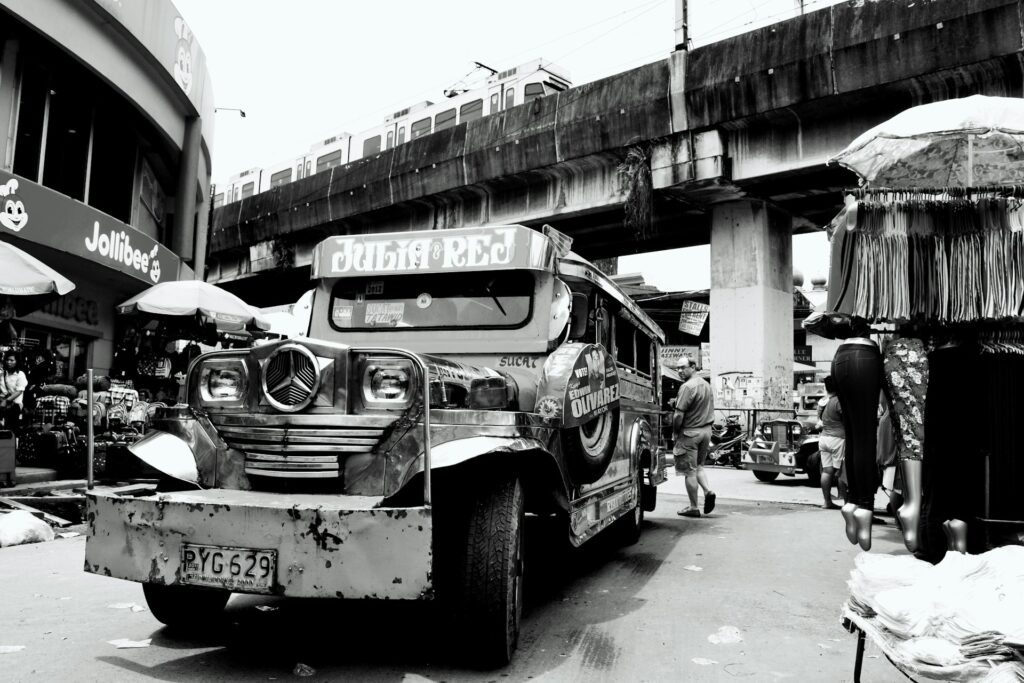Introduction: Welcome to the heart of the Philippines, where vibrant culture meets bustling streets and diverse neighborhoods. Manila, the capital city, is a sprawling metropolis teeming with life and energy, but navigating its streets can be a daunting task for newcomers and seasoned locals alike. In this comprehensive guide, we’ll delve into the intricacies of Manila transportation system, from iconic jeepneys to modern train networks, providing you with the knowledge and confidence to explore the city with ease.
Manila t :
Manila, often referred to as the “Pearl of the Orient,” is a city of contrasts, where historic landmarks stand alongside towering skyscrapers, and traditional customs blend seamlessly with modern trends. From the historic walled city of Intramuros to the bustling markets of Divisoria, Manila offers a diverse array of attractions and experiences for visitors to discover.
Understanding Manila’s Transportation Landscape:
Manila’s transportation network is as diverse as the city itself, comprising a mix of traditional and modern modes of travel. From iconic jeepneys to sleek light rail systems, navigating Manila’s bustling streets requires a combination of patience, adaptability, and local knowledge.
The Iconic Jeepney Experience:
No visit to Manila is complete without experiencing a ride on a jeepney, the iconic and colorful public utility vehicles that ply the city’s roads. Originally repurposed from surplus military jeeps after World War II, jeepneys have become a symbol of Filipino ingenuity and resourcefulness. With their vibrant decorations and communal seating, riding a jeepney offers a unique glimpse into everyday life in Manila.
Embracing Modernity with the LRT and MRT:
For travelers looking for a faster and more efficient way to navigate Manila’s congested streets, the Light Rail Transit (LRT) and Metro Rail Transit (MRT) systems provide convenient options. Spanning key routes across the city, these elevated train networks offer a reprieve from Manila’s notorious traffic jams, allowing passengers to reach their destinations quickly and comfortably.
Navigating Manila’s Roads:
Manila’s streets can be chaotic and congested, especially during peak hours, but with some insider tips and tricks, navigating the city’s roads can be a breeze. From using ride-hailing apps to mastering the art of crossing busy intersections, understanding the unwritten rules of Manila’s traffic can help you navigate with confidence.
Exploring Manila’s Waterways:
With its strategic location on Manila Bay and numerous interconnected waterways, Manila also offers the opportunity for travelers to explore its sights and attractions by boat. Whether cruising along the Pasig River or taking a ferry to nearby islands, experiencing Manila from the water provides a unique perspective on the city’s rich history and vibrant culture.
Making the Most of Manila’s Transportation:
To truly make the most of your time in Manila, it’s essential to embrace the city’s unique transportation options and explore with an open mind. Whether you’re hopping on a jeepney to visit historic landmarks or riding the LRT to explore trendy neighborhoods, Manila’s transportation system offers endless opportunities for adventure and discovery.
Tips for Travelers:
- Plan your route in advance to avoid getting lost in Manila’s labyrinthine streets.
- Embrace the chaos and unpredictability of Manila’s transportation system – it’s all part of the experience!
- Be prepared for long waits and crowded conditions, especially during peak hours.
- Keep an eye out for pickpockets and scams, particularly in crowded areas and tourist hotspots.
- Stay hydrated and carry a portable fan or umbrella to beat the heat during your travels.
- Don’t be afraid to ask locals for directions or recommendations – Filipinos are known for their warmth and hospitality.
FAQs:
How much does it cost to ride a jeepney in Manila?
Riding a jeepney typically costs around PHP 9-15, depending on the distance traveled.
Are there any safety concerns when using Manila’s public transportation?
While Manila’s transportation system is generally safe, travelers should exercise caution and remain vigilant, especially in crowded areas and late at night.
Can I use a foreign driver’s license in Manila?
Foreign visitors can use their valid driver’s licenses in the Philippines for up to 90 days, provided they have an English translation or an International Driving Permit.
Are there any cultural norms or etiquette to be aware of when using public transportation in Manila?
When riding jeepneys or buses, it’s customary to pass the fare to the driver or conductor seated near the entrance. Additionally, it’s considered polite to offer your seat to the elderl’y pregnant women, or individuals with disabilities.
Is it easy to find taxis in Manila?
Taxis are plentiful in Manila, especially in tourist areas and major thoroughfares. However, be aware of taxi scams and always insist on using the meter to avoid overcharging.
What are the best times to travel around Manila to avoid traffic?
Generally, traffic in Manila is lighter during off-peak hours, such as late at night or early in the morning. Planning your travels outside of rush hour can help minimize delays and congestion.
Conclusion:
Manila transportation system is a reflection of the city itself – vibrant, diverse, and full of surprises. Whether you’re weaving through traffic in a colorful jeepney or soaring above the skyline on the LRT, navigating Manila’s urban jungle is an adventure like no other. By embracing the unique sights, sounds, and experiences of Manila’s transportation network, you’ll discover a city that is as dynamic as it is captivating. So hop on board, and let the journey begin!

